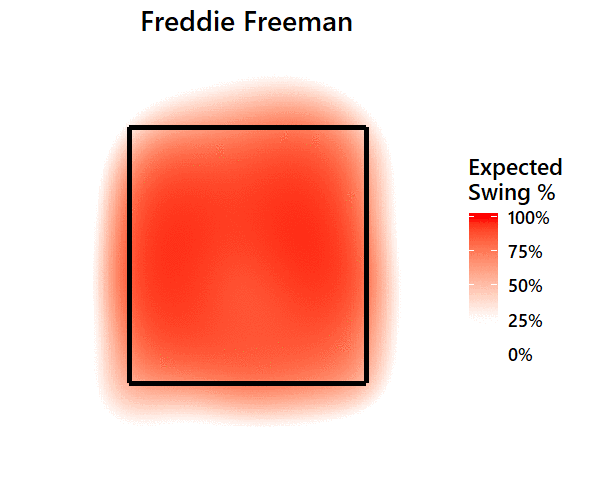By ANDREW KYNE
Baseball Info Solutions’ pitch charting data allows for many interesting applications — one being as a way to evaluate a player’s plate discipline.
By checking out the plate discipline leaderboards at FanGraphs, we can do things like confirm that Joey Votto rarely swings at pitches out of the strike zone or learn that Freddie Freeman swings at a ton of pitches in the strike zone. (O-Swing% shows how frequently hitters chased pitches out of the zone; Z-Swing% shows how frequently hitters swing at pitches in the zone.)
We can put a number on it. But what does it actually look like? Where are hitters taking their swings, and how far do they extend their zones?
Using methods similar to what Jim Albert has demonstrated on the Exploring Baseball Data with R blog with generalized additive models and what FanGraphs has on its site, let’s visualize the swing tendencies of baseball’s most and least disciplined hitters.
The plots below show how likely a batter is to swing if a pitch is thrown in a certain location, using data from the 2018 season. As the legends show, anything above a 25% expected swing rate is colored in red, with darker red indicating a higher swing rate. All plots are from the pitcher’s perspective.
Out-of-Zone Differences
First, let’s compare some of the extreme hitters who either swung a little or a lot at pitches out of the zone last year.
Low O-Swing%: Joey Votto
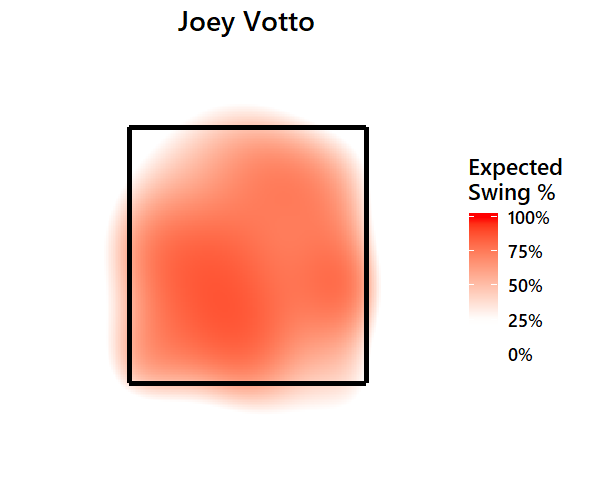
The stat: Swung at 16% of pitches outside the zone in 2018 (lowest among qualified batters)
Votto’s plate discipline has long been elite, and his expected swing rate locations almost perfectly fit the strike zone borders. While he covered all in-zone pitches to some degree in 2018, it appears that there’s a bit higher expected swing rate on down-and-in pitches (like this pitch he got from Edgar Santana).
Low O-Swing%: Andrew McCutchen
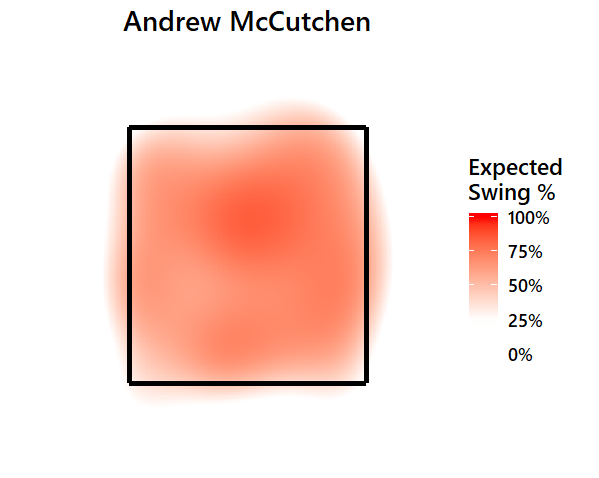
The stat: Swung at 19% of pitches outside the zone in 2018 (second-lowest among qualified batters)
McCutchen followed Votto among the O-Swing% leaders last year. His 19.4% O-Swing was a career-best. There’s a small patch of dark red there in the heart of the zone, about belt-high, that appears to have been his most likely swing (like this one against Andrew Chafin).
Now, a couple players who do extend beyond the zone…
High O-Swing%: Salvador Perez
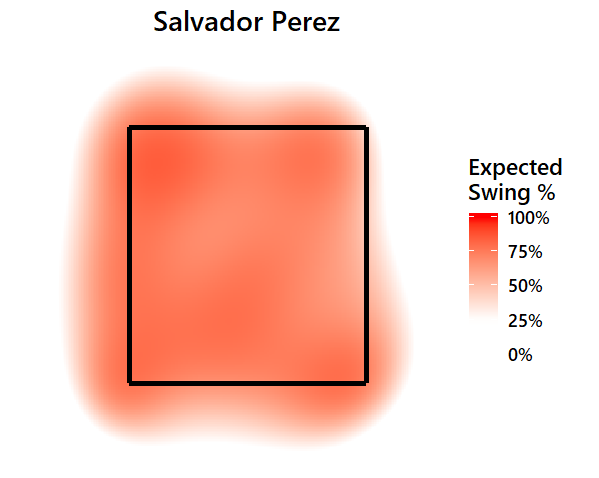
The stat: Swung at 48% of pitches outside the zone in 2018 (highest among qualified batters)
He’ll miss the 2019 season after undergoing Tommy John surgery, but Perez’s tendency is too extreme not to include here. The plot shows how willing he was to swing at anything within the vicinity of the zone.
High O-Swing%: Javier Baez
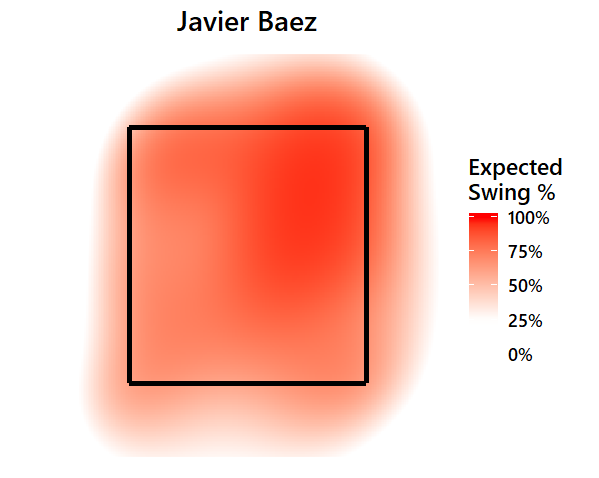
The stat: Swung at 46% of pitches outside the zone in 2018 (second-highest among qualified batters)
Baez extends the zone in similar fashion, though maybe not as much on far outside pitches as Perez. Interestingly, the up-and-in pitch looks like one that he offers at a lot (or at least did in 2018). Here are some examples of that: a swinging strike against Brandon Woodruff; a popup against Luke Weaver; a home run against Gerson Bautista.
Votto and Baez each had a 131 wRC+ in 2018, but took different approaches to get there. Here’s a GIF to show their swing rate differences back-to-back:
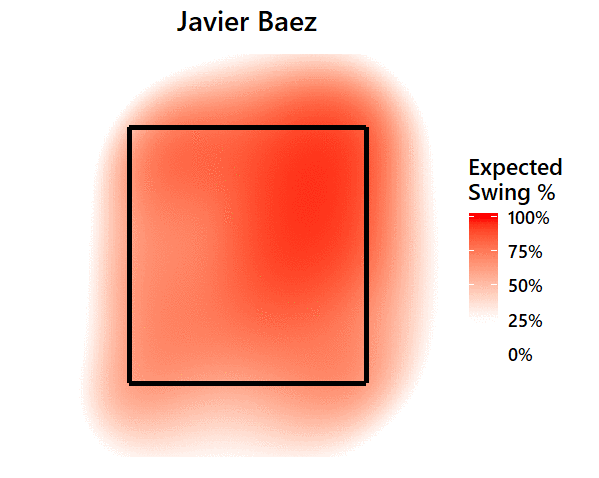
In-Zone Differences
Next, let’s look at two batters who were at the extremes of swinging at pitches in the zone.
High Z-Swing%: Freddie Freeman
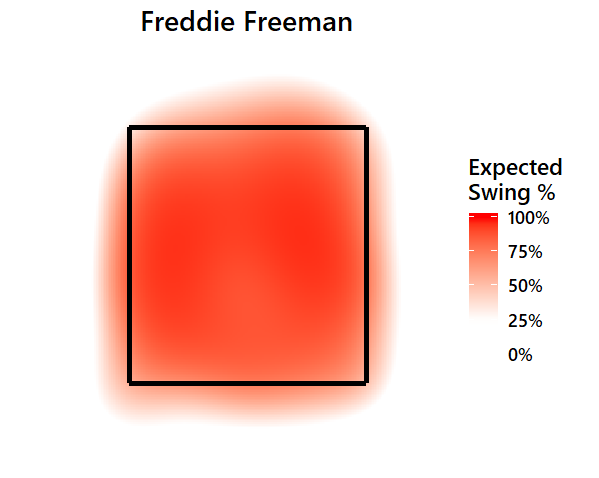
The stat: Swung at 85% of pitches inside the zone in 2018 (highest among qualified batters)
If a pitch is anywhere in the strike zone, Freeman is likely to swing. Prior to his 85% rate last year, he swung at 84% of pitches in the zone in 2017 and 81% in 2016.
Low Z-Swing%: Brett Gardner
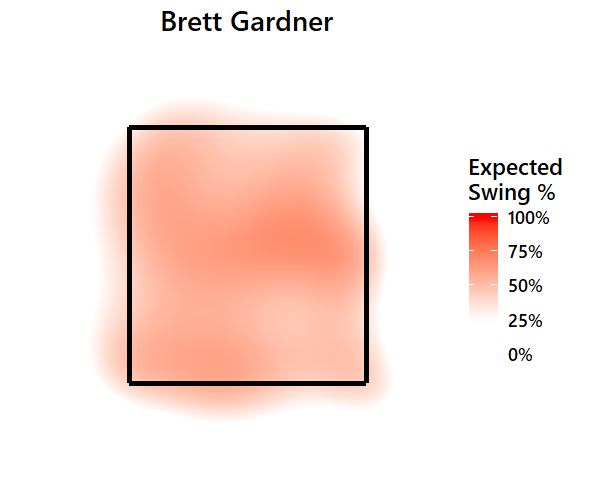
The stat: Swung at 53% of pitches inside the zone in 2018 (second-lowest among qualified batters, behind the now-retired Joe Mauer)
Gardner’s plot features a much lighter shade of red all around, indicating how much less likely he is to swing at pitches in the zone than Freeman. His Z-Swing% has consistently hovered in the 50-55% range for his career. There appears to be a slightly darker band of red across the middle of the zone, but Gardner is definitely willing to let pitches pass through everywhere.
And here’s a GIF to compare Freeman and Gardner:
